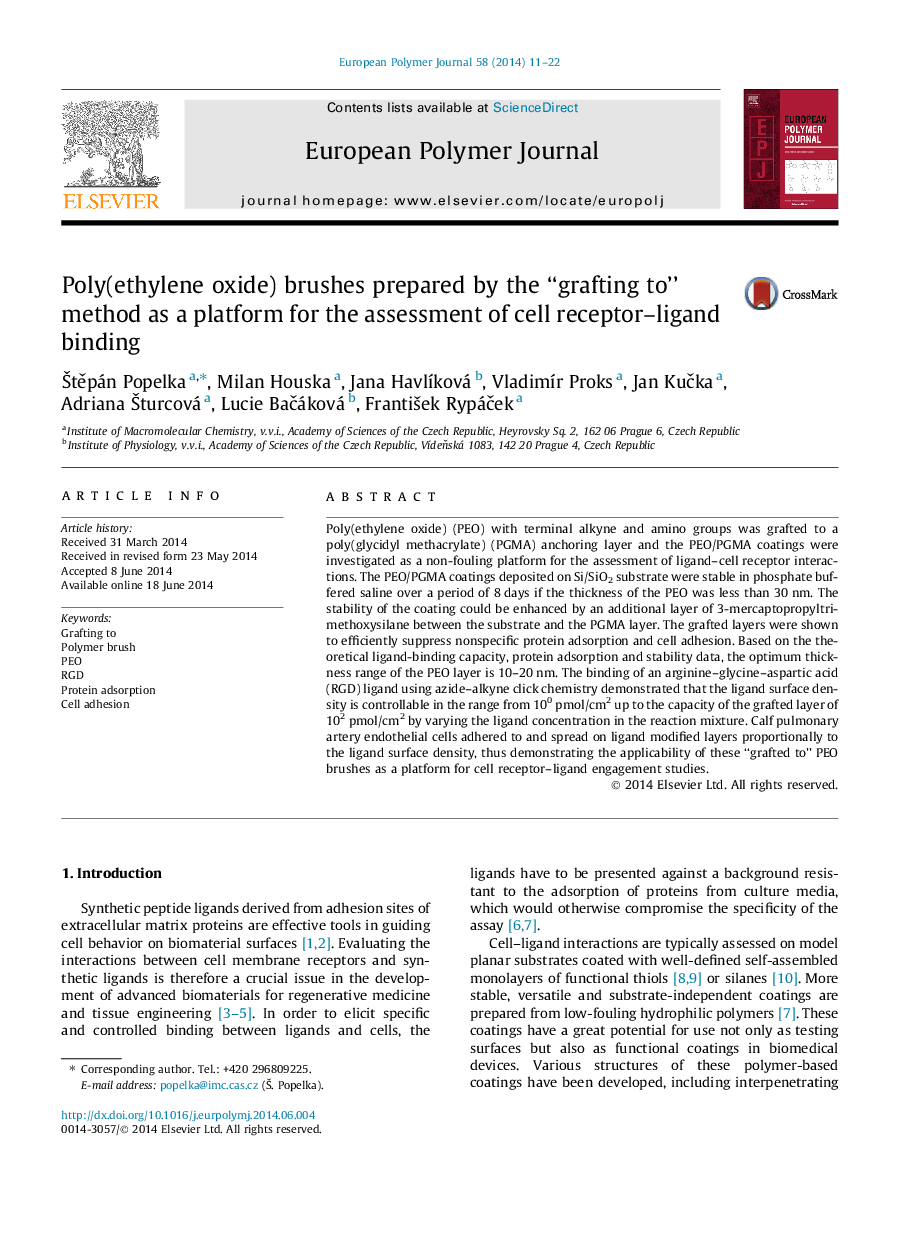| کد مقاله | کد نشریه | سال انتشار | مقاله انگلیسی | نسخه تمام متن |
|---|---|---|---|---|
| 1399342 | 1501377 | 2014 | 12 صفحه PDF | دانلود رایگان |
• PEO/PGMA layers with PEO thickness up to 30 nm are stable in buffered saline for 8 days.
• PEO/PGMA layers degrade by detachment in the form of a continuous film.
• CuAAC coupling of a peptide ligand allows using the full capacity of the PEO layer.
• Cell adhesion is promoted by the RGD peptide at concentrations of 101 pmol/cm2.
• Optimal PEO thickness for the ligand–cell receptor assay ranges from 10 nm to 20 nm.
Poly(ethylene oxide) (PEO) with terminal alkyne and amino groups was grafted to a poly(glycidyl methacrylate) (PGMA) anchoring layer and the PEO/PGMA coatings were investigated as a non-fouling platform for the assessment of ligand–cell receptor interactions. The PEO/PGMA coatings deposited on Si/SiO2 substrate were stable in phosphate buffered saline over a period of 8 days if the thickness of the PEO was less than 30 nm. The stability of the coating could be enhanced by an additional layer of 3-mercaptopropyltrimethoxysilane between the substrate and the PGMA layer. The grafted layers were shown to efficiently suppress nonspecific protein adsorption and cell adhesion. Based on the theoretical ligand-binding capacity, protein adsorption and stability data, the optimum thickness range of the PEO layer is 10–20 nm. The binding of an arginine–glycine–aspartic acid (RGD) ligand using azide–alkyne click chemistry demonstrated that the ligand surface density is controllable in the range from 100 pmol/cm2 up to the capacity of the grafted layer of 102 pmol/cm2 by varying the ligand concentration in the reaction mixture. Calf pulmonary artery endothelial cells adhered to and spread on ligand modified layers proportionally to the ligand surface density, thus demonstrating the applicability of these “grafted to” PEO brushes as a platform for cell receptor–ligand engagement studies.
Figure optionsDownload as PowerPoint slide
Journal: European Polymer Journal - Volume 58, September 2014, Pages 11–22
